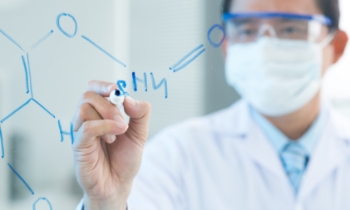The pharmaceutical industry is built on a foundation of trust, efficacy, and safety. Ensuring the purity of pharmaceutical products is paramount, as impurities can compromise drug safety and effectiveness. To maintain high standards of quality, various strategies are employed to isolate and purify impurities from pharmaceutical compounds. Here, we explore some of the key methods used in the industry.
Understanding Impurities in Pharmaceuticals
Impurities in pharmaceuticals can arise from multiple sources, including raw materials, synthesis processes, degradation of active pharmaceutical ingredients (APIs), and contamination during manufacturing. These impurities can be classified into organic, inorganic, and residual solvents. Identifying and removing these impurities is crucial to comply with regulatory standards and ensure patient safety.
Strategies for Isolation and Purification
ChromatographyChromatography is indeed one of the most widely used techniques for separating and analyzing impurities. It works by separating mixtures into their individual components based on their differential affinities for a stationary phase and a mobile phase. This method is crucial in various fields such as chemistry, biochemistry, pharmaceuticals, and environmental science, where precise separation and analysis of substances are required.
CrystallizationCrystallization is a purification technique that exploits the differences in solubility between the API and its impurities. By carefully controlling the temperature and solvent conditions, pure crystals of the API can be formed while impurities remain in the solution. This method is particularly effective for removing organic impurities.
DistillationDistillation is used primarily for purifying liquid APIs by separating components based on their boiling points. This method is effective for removing residual solvents and other volatile impurities. Techniques such as fractional distillation and azeotropic distillation are often employed to enhance separation efficiency.
Solid-Phase Extraction (SPE) SPE involves passing a liquid sample through a solid adsorbent material, which selectively retains impurities while allowing the purified API to pass through. This method is particularly useful for concentrating and isolating trace impurities from complex mixtures.
ElectrophoresisElectrophoresis is a technique that separates charged impurities based on their movement in an electric field. This method is highly effective for analyzing and purifying protein-based drugs and other biologics, where traditional methods might fall short.
PrecipitationPrecipitation involves adding a reagent that reacts with impurities to form an insoluble compound, which can then be filtered out. This method is simple and cost-effective, making it suitable for large-scale purification processes.
Analytical Techniques for Impurity Detection
To ensure the effectiveness of isolation and purification strategies, robust analytical techniques are employed to detect and quantify impurities. These techniques include:
- Mass Spectrometry (MS): Provides detailed information about the molecular weight and structure of impurities.
- Nuclear Magnetic Resonance (NMR) Spectroscopy: Offers insights into the molecular environment and chemical structure of impurities.
- Fourier-Transform Infrared (FTIR) Spectroscopy: Identifies functional groups and chemical bonds in impurities.
- Ultraviolet-Visible (UV-Vis) Spectroscopy: Measures the absorbance of impurities, providing information about their concentration.
Regulatory Considerations
Regulatory agencies like the FDA and EMA have stringent guidelines for impurity levels in pharmaceutical products. Compliance with these regulations is essential to ensure drug safety and efficacy. Pharmaceutical companies must conduct thorough impurity profiling and submit detailed reports during the drug approval process.
In the dynamic field of pharmaceuticals, metabolite synthesis is gaining increasing attention due to its vital role in drug discovery and development. Metabolites are the by-products formed when the body processes drugs, and understanding their formation and effects is crucial for ensuring the safety and efficacy of new medications. This article delves into the innovations and applications of metabolite synthesis in pharmaceuticals.
The Importance of Metabolite Synthesis
Metabolites can significantly influence the pharmacokinetics and pharmacodynamics of a drug. Some metabolites are active and contribute to the therapeutic effects, while others may be inactive or potentially toxic. Therefore, identifying and synthesizing these metabolites early in the drug development process is essential for:
- Safety Assessment: Understanding potential toxicities and mitigating adverse effects.
- Efficacy Evaluation: Ensuring that active metabolites contribute positively to the therapeutic outcome.
- Regulatory Compliance: Meeting the requirements of regulatory bodies that demand comprehensive metabolite profiling.
Innovations in Metabolite Synthesis
Recent advancements in technology and methodologies have revolutionized metabolite synthesis. Some notable innovations include:
- In Silico Prediction: Computer-aided drug design (CADD) tools predict metabolic pathways and identify possible metabolites. This reduces the time and cost associated with experimental studies.
- Biocatalysis: Enzymes and microbial systems are employed to mimic the human metabolic process, producing metabolites in a controlled laboratory setting. This method is efficient and environmentally friendly.
- Microfluidic Systems: Lab-on-a-chip technologies allow for high-throughput screening and synthesis of metabolites using minimal amounts of reagents and samples. These systems enhance precision and speed in metabolite analysis.
- Stable Isotope Labeling: Incorporating stable isotopes into drug molecules helps track and analyze metabolites through advanced techniques like mass spectrometry. This provides detailed insights into metabolic pathways and metabolite structures.
Conclusion
The isolation and purification of impurities are critical components of pharmaceutical manufacturing. By employing advanced techniques and adhering to regulatory standards, the industry can ensure the production of safe, effective, and high-quality drugs. Continuous innovation in purification methods will further enhance the ability to deliver pure pharmaceuticals, safeguarding public health and trust.







